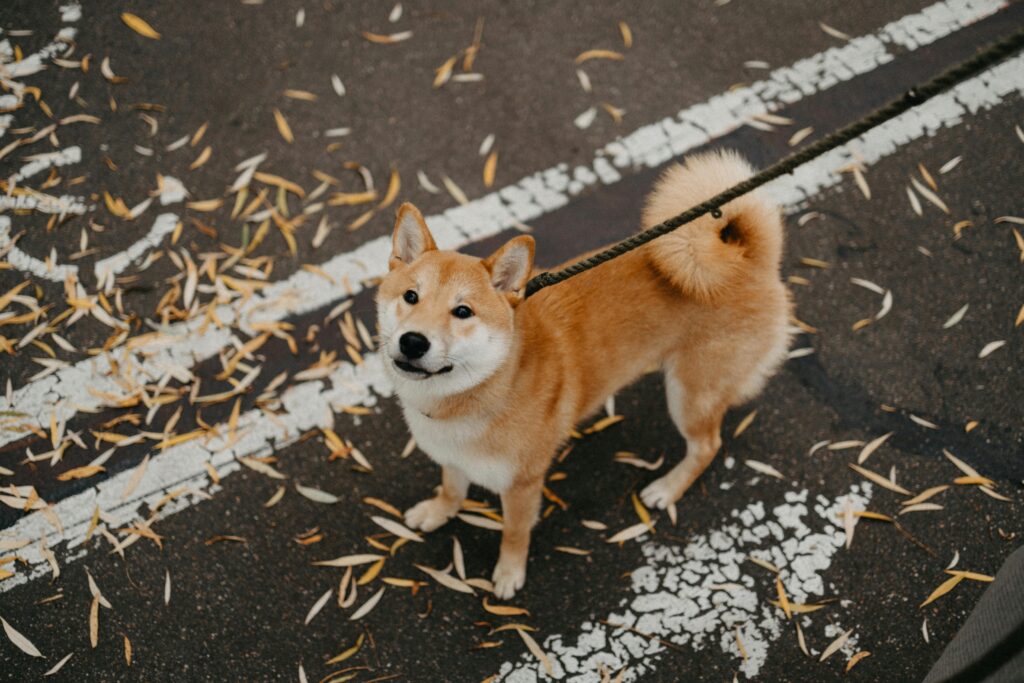Japan’s rich culture and history are reflected not only in its art, cuisine, and traditions but also in its dog breeds. Japanese dog breeds are known for their distinct characteristics, loyal temperaments, and unique aesthetics. From ancient time-honored guardians to modern companions, these breeds are both charming and versatile. In this article, we will explore five of the most notable Japanese dog breeds, their origins, traits, and what to consider if you’re thinking of adding one of these delightful dogs to your family.
1. Shiba Inu
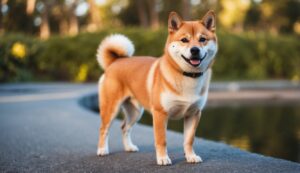
Overview
The Shiba Inu is perhaps the most recognized and beloved of all Japanese dog breeds. Often compared to a fox due to its adorable and expressive face, the Shiba Inu has become an international sensation.
History
Dating back over 2,300 years, the Shiba Inu was originally bred to hunt small game in the mountainous regions of Japan. The breed was adept at flushing out birds and small animals, and its spirited nature made it an effective hunting companion. Following World War II, efforts were made to preserve the breed, which had nearly become extinct.
Characteristics
Shiba Inus are small to medium-sized dogs, typically weighing between 17 to 23 pounds. They have a compact, muscular build and a thick double coat that comes in various colors, including red, sesame (red with black-tipped hairs), and black and tan. Their erect ears and curly tails contribute to their fox-like appearance.
Temperament
Shiba Inus are known for their spirited and independent personalities. They are intelligent, and confident, and often display a stubborn streak, which can make training a bit challenging. Early socialization and consistent training are essential to ensure they develop into well-rounded companions. Despite their occasional aloofness, they are affectionate with their families and can be quite playful.
Care Requirements
Shiba Inus are relatively easy to care for, requiring moderate exercise to keep them happy and healthy. Daily walks and playtime will help burn off excess energy. Their double coat necessitates regular brushing, particularly during shedding seasons. Health-wise, Shiba Inus are generally robust, but they can be prone to certain conditions, such as hip dysplasia and allergies.
2. Akita Inu
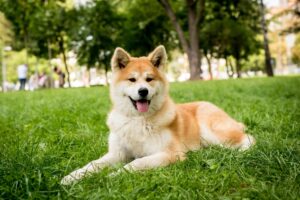
Overview
The Akita Inu is a majestic and powerful breed known for its loyalty and protective instincts. This breed has a storied history deeply rooted in Japanese culture.
History
Originating from the mountainous regions of northern Japan, the Akita Inu was initially used for hunting large game, including bears, boars, and deer. The breed gained worldwide recognition with the story of Hachiko, the loyal Akita who waited for his deceased owner at the train station for nearly ten years. This tale has elevated the Akita Inu to a symbol of loyalty in Japan and beyond.
Characteristics
Akitas are large, strong dogs typically weighing between 70 to 130 pounds. They have a thick, double coat that can come in various colors, including white, brindle, and various shades of red. Their erect ears, broad heads, and bushy tails make them instantly recognizable.
Temperament
Akitas are known for their loyalty and devotion to their families. While they can be reserved with strangers, they are typically affectionate and protective toward their loved ones. Socialization from a young age is critical to help them become well-adjusted adults. Akitas can be strong-willed and requires an experienced owner who can provide firm, consistent training and boundaries.
Care Requirements
Due to their size and strength, Akitas needs regular exercise, such as daily walks and playtime, to maintain a healthy weight and to reduce behavioral issues. They can thrive in various living situations, but having access to a yard is beneficial. Their thick coat requires regular brushing, especially during shedding seasons. Being prone to certain health issues, including hip dysplasia and autoimmune disorders, regular veterinary check-ups are advised.
3. Shikoku
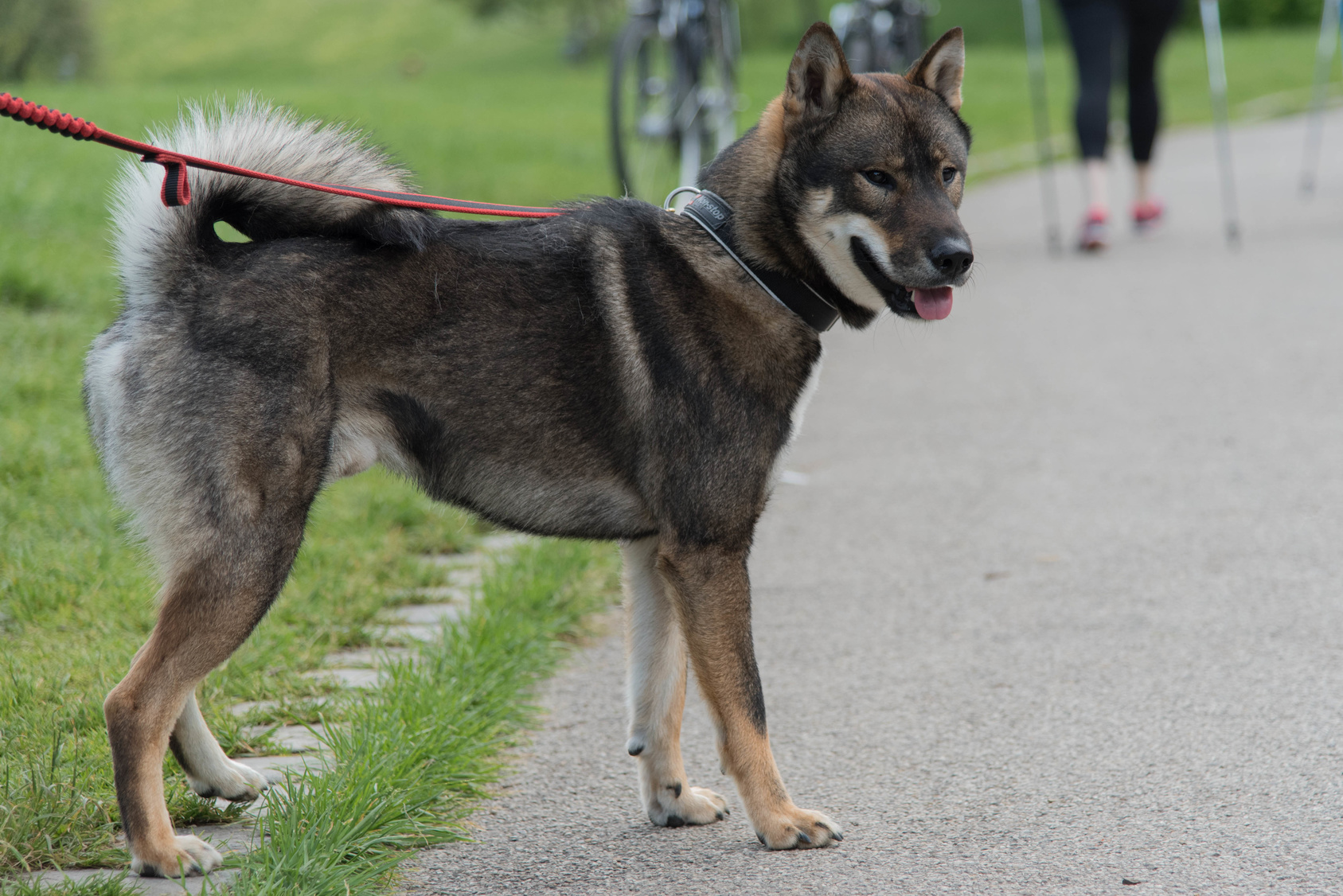
Overview
The Shikoku is a lesser-known breed but one that is gaining popularity for its unique qualities and spirited personality. Known for its loyalty and agility, this breed makes an excellent companion for active families.
History
The Shikoku breed, native to the Shikoku Island in Japan, was initially bred as a hunting dog to track and catch wild boar. It is believed that the breed’s ancestors were brought to Japan from China, and over the centuries, they evolved into the Shikoku we know today.
Characteristics
Shikoku dogs are medium-sized, typically weighing between 35 to 65 pounds. They have a well-balanced and athletic build, with a thick double coat that can be found in red, sesame, or black and tan. Their ears are upright and their tails curl over their backs, giving them a distinctive appearance.
Temperament
The Shikoku is known for its spirited and bold nature. They are intelligent, and independent, and can sometimes exhibit a stubborn streak, which makes training essential yet rewarding. These dogs are known for their loyalty and bond deeply with their families. Early socialization and regular exercise are crucial to channel their energy positively.
Care Requirements
Shikoku dogs thrive in active households where they can participate in various physical and mental activities. They enjoy long walks, hikes, and games that challenge their intelligence. Regular grooming is necessary to manage their shedding, especially during seasonal changes. While generally healthy, Shikokus can be prone to certain genetic issues, so maintaining a regular veterinary schedule is important.
4. Kishu Ken

Overview
The Kishu Ken is a striking and versatile breed, known for its hunting abilities and loyalty. This breed represents the spirit of the Japanese countryside and has a devoted following.
History
Originating from the Kishu region (now part of Wakayama Prefecture), the Kishu Ken was bred for hunting large game, such as boar and deer. This breed has been recognized as a national treasure in Japan, reflecting its cultural significance and deep-rooted history.
Characteristics
Kishu Kens are medium to large-sized dogs, typically weighing between 30 to 80 pounds. They have a strong, muscular build and can be found in various colors, including sesame, brindle, and white. Their distinct features include a broad head, pointed ears, and a long, bushy tail.
Temperament
Kishu Kens are known for their intelligence, loyalty, and independent nature. They can be aloof with strangers but are extremely affectionate with their families. These dogs thrive with consistent training and socialization, and they require a firm and confident owner to guide them.
Care Requirements
Kishu Kens are active dogs that require regular exercise to maintain both physical and mental health. Daily walks, play sessions, and opportunities to run off-leash in a safe area are essential. Their short coat is easy to maintain and requires minimal grooming, but they do shed, so regular brushing helps keep loose hair under control. As a breed, they are relatively healthy but may be prone to certain health issues, including hip dysplasia.
5. Tosa Inu
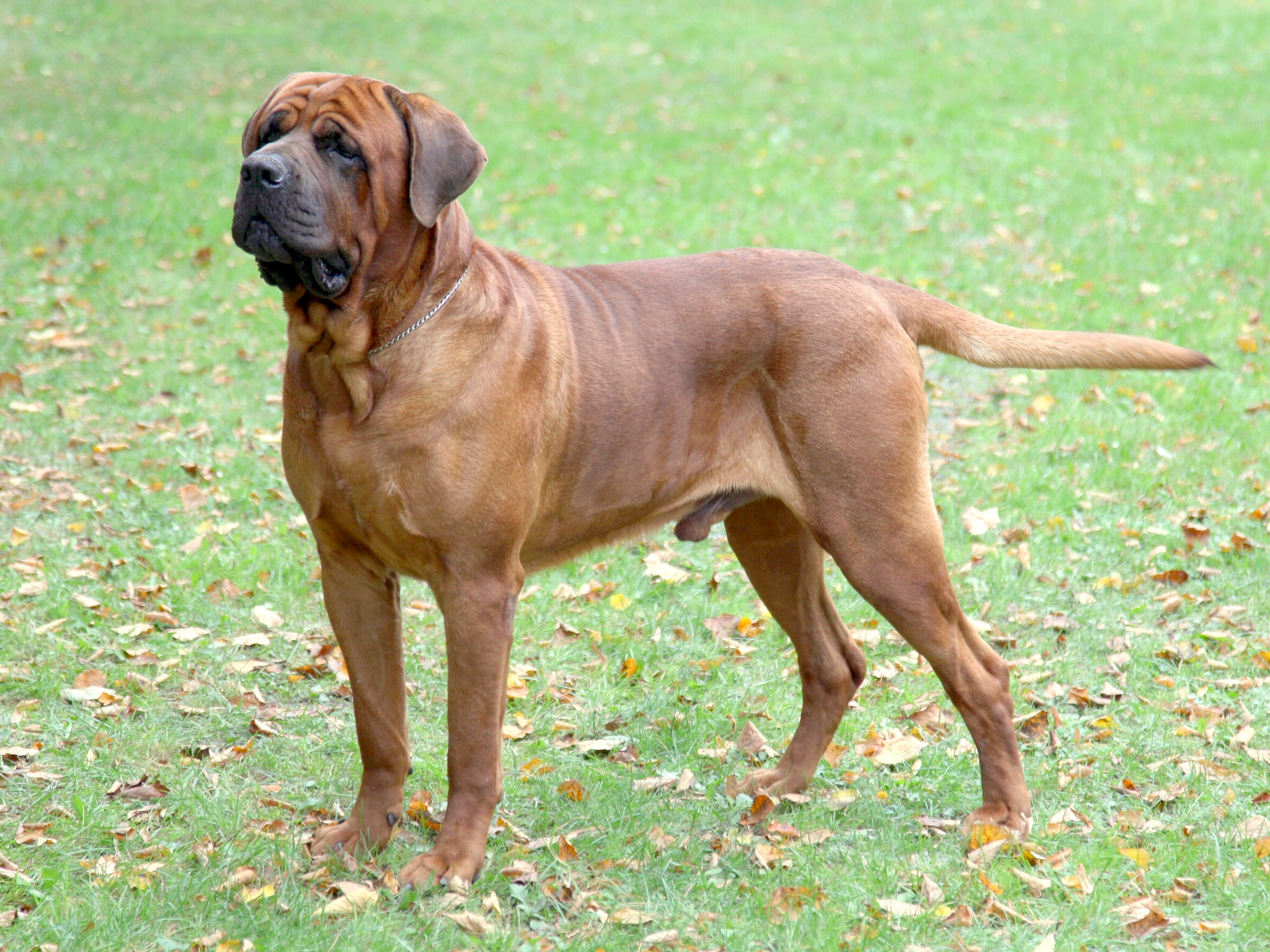
Overview
The Tosa Inu, also known as the Tosa Ken, is a rare and unique breed with a fascinating history. This breed is known for its calm demeanor and strength.
History
The Tosa Inu originated in the Tosa region of Japan during the 19th century. Breeders aimed to create a versatile fighting dog by crossing native Japanese breeds with European breeds like the Bulldog, Mastiff, and Great Dane. While originally bred for dog fighting, the Tosa Inu is now appreciated more for its temperament and loyalty as a companion dog.
Characteristics
Tosa Inus are large and powerful, typically weighing between 100 to 200 pounds. They possess a muscular build and have a short coat that comes in various colors, including red, brindle, and fawn. Their distinctive appearance is characterized by their broad head and strong jaws.
Temperament
Despite their formidable size, Tosa Inus are known for their calm and gentle nature. They are typically friendly with children and protective of their families. Early socialization is crucial for Tosa Inus to ensure they remain well-adjusted, as their strength requires responsible ownership. They can be reserved with strangers but generally warm up with proper introductions.
Care Requirements
Tosa Inus requires moderate exercise to stay healthy and happy. Daily walks and playtime will help channel their energy and prevent boredom. Their short coat is relatively low-maintenance, requiring only occasional brushing. Regular veterinary care is vital to monitor their health, as they may be prone to certain issues, including hip dysplasia and heart conditions.
Summary:
Certainly! Here’s a summary of the top 5 Japanese dog breeds presented in a table format:
| Breed | Overview | History | Characteristics | Temperament | Care Requirements |
|---|---|---|---|---|---|
| Shiba Inu | The most recognized Japanese breed | 2,300 years old, bred for hunting small game | Small to medium, 17-23 lbs, thick double coat in various colors | Intelligent, independent, stubborn; affectionate | Moderate exercise, regular brushing, prone to hip dysplasia and allergies |
| Akita Inu | Majestic and powerful breed | Originating from northern Japan, it was used for hunting large game | Large, 70-130 lbs, thick coat in various colors | Loyal, protective, reserved with strangers | Regular exercise requires a yard, and regular grooming, prone to health issues |
| Shikoku | A spirited and energetic breed | Bred on Shikoku Island for hunting wild boar | Medium-sized, 35-65 lbs, thick coat in red, sesame, or black and tan | Bold, intelligent, requires early socialization | Requires daily exercise, regular grooming, and generally healthy |
| Kishu Ken | A striking and versatile breed | Bred for hunting large game in the Kishu region | Medium to large, 30-80 lbs, strong build with a thick coat | Intelligent, loyal, independent; requires firm guidance | Regular exercise, minimal grooming, monitoring for health issues |
| Tosa Inu | Rare and unique breed | Bred for dog fighting, created from various breeds | Large, 100-200 lbs, short coat in various colors | Calm, gentle, friendly with children | Moderate exercise, low-maintenance coat, regular veterinary care |

